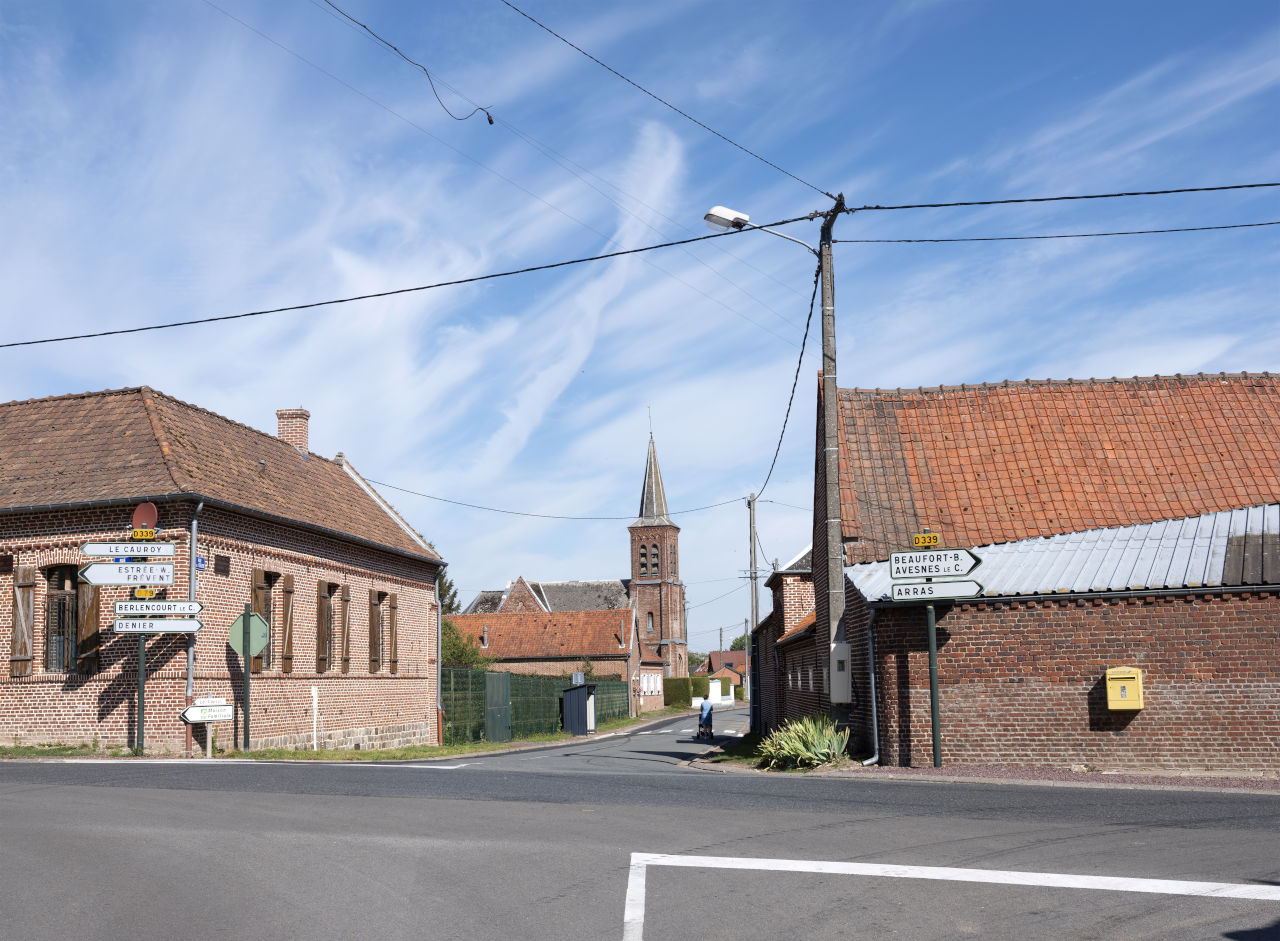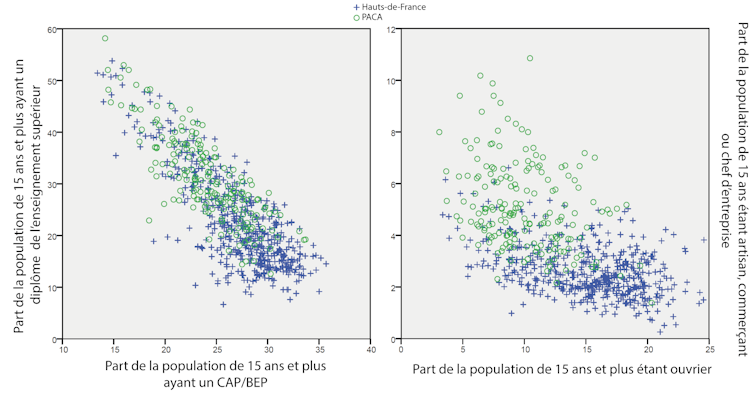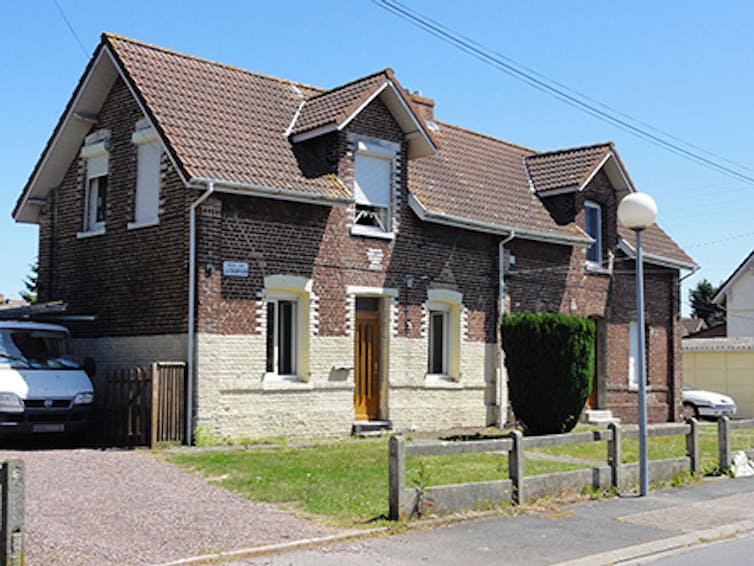Rassemblement national by its electorate
Thierry Mariani in the Provence-Alpes-Côte d'Azur (PACA) region, Sébastien Chenu in Hauts-de-France: the two heads of list for the Rassemblement National (RN) party are neck and neck with Les Républicains (LR) candidates Renaud Muselier and Xavier Bertand, ahead of La République en Marche (LREM) and left-wing lists struggling to convince according to polls examining voting intention in these two key regions of France.
Arnaud Huc, University of Montpellier

The Rassemblement National is more than just a program, elected representatives and polemics; it's also its voters. And yet, if we look beyond the apparent monolithism of the RN electorate as revealed by the polls, it is possible to observe the coexistence of several electoral bodies.
In the 2017 presidential elections, two main electorates shared their RN vote with more specific electorates: electorates with royalist sympathies, practicing Catholics, law enforcement electorates, etc.
The two Rassemblement National (main) constituencies discussed here represent a significant proportion of the RN vote, and correspond to geographically and ideologically distinct "ideal types". Nevertheless, they share several common traits: they tend to live in suburban areas, work in the private sector and generally have less than a bachelor's degree.
Rather than show these two electoral bodies on maps, we have chosen to show them through statistics and by a roundabout means, i.e. through the sociological characteristics of the populations of communes where the RN vote is significant.
Two areas of the Rassemblement National vote
The communes where this vote is important share certain sociological characteristics. The relationship between these variables and NR voting results can be measured using tools such as linear regression, principal component analysis and multilevel analysis. Linear regression makes it possible to check how the "NR vote" variable evolves when other variables, such as the share of certain CSPs in the commune, evolve.
However, we must be careful not to draw hasty conclusions between certain characteristics of these communes and the RN vote. This is because, unlike polls or door-to-door surveys, the tools used do not focus on individuals taken individually, but on statistical aggregates. As a result, the relationships measured are not necessarily causal, and some variables may conceal others.
To illustrate this electoral duality of the RN, we have chosen to study it at the last two "national" elections (presidential in 2017, European in 2019) and in two regions that have historically been "bastions" of the RN vote: the Provence-Alpes-Côte d'Azur region, where the FN vote took root in the 1980s, and Haut-de-France, where it developed from the 1990s onwards.
On these two territories, there is a very strong correlation (0.945) between the RN vote in the 2017 presidential elections and the 2019 European elections. This means that communes where the RN vote was particularly high in 2017 are also those where this same vote was high in 2019 (calculations are weighted by commune population so that small communes are not over-represented).
These two regions are similar from an electoral point of view: the RN came out on top in the first round of 2017. Marine Le Pen came out on top with 27.17% of votes cast in PACA and even 31.07% (her best result) in Hauts-de-France. Obviously, these are not the only regions in which the RN vote is significant, and the study of these territories is not intended to describe the RN vote in all its complexity and totality.
However, in both regions, the RN's good results were not achieved in communes with the same sociological characteristics. The RN vote is particularly strong in communes with a high percentage of blue-collar workers in Hauts-de-France, while it is weaker in those with a high proportion of craftsmen, shopkeepers and business owners. The relationship is rather the reverse in PACA (Chart 1, right).
Similarly, the communes in Hauts-de-France where the RN vote is high have a higher proportion of inhabitants with a CAP/BEP qualification than in PACA, where the overall level of education is higher (Chart 1, left). These differences describe distinct regional sociological realities, but also indirectly distinct electorates, as underlined by the interviews conducted as part of my thesis work in each of these areas.

A. Huc, Provided by the author
Communes with a high RN vote are not only sociologically distinct, but also "economically" distinct. In the PACA region, the RN vote comes from communes where the proportion of taxpaying households is higher than the national average, while in the Hauts-de-France region, poorer communes are more likely to vote RN than wealthier ones.
However, this should not be seen as a direct opposition between a "rich" RN vote in the south and a "poor" RN vote in the north (Chart 2). In fact, the RN vote in the south tends to come from the "middle classes", and each of these areas has a variety of socio-economic profiles.
There is, however, a socio-economic difference between these electorates. RN voters in PACA are closer to the typical profile of craftsmen, small businessmen and self-employed people with average levels of wealth, while in Hauts-de-France the typical profile of the RN voter is closer to that of the working-class worker or employee. What's more, communes in Hauts-de-France with a level of wealth comparable to those where the RN vote is high in PACA tend to be relatively unfavorable to the RN.

A. Huc, Provided by the author
RN's duality
This socio-economic difference is also reflected in the discourse of RN voters. When interviewed, RN voters in the Hauts-de-France region are quicker to raise the themes of social inequality, poverty and even wealth redistribution. These are all issues that are more readily raised by voters of left-wing parties. Conversely, RN voters in the PACA region are quicker to talk about immigration, excessive taxation and the welfare of certain sections of the population.
This dichotomy is also reflected in the voting patterns of RN voters. Some RN voters in the Pas-de-Calais consider the RN to be a "working-class " party, and some vote for left-wing parties when the RN is not represented in the second round, rather than for right-wing parties, which are still considered to be "for the rich". Conversely, RN voters in the south are more likely to have a history of voting on the right, and to be comfortable with the themes and economic programs of right-wing parties.
Therein lies the RN's duality. This is nothing new, as some polls were already outlining it in 2013, while the debate on "leftist-leftism" and "worker-leftism" has been going on since 1997.
In this way, the party is able to mobilize electorates whose political, economic and social concerns are different, if not opposed. Paradoxically, many RN voters in Mediterranean départements rail against "welfare recipients", while some of those they consider to be "assisted" also vote for the RN in northern départements, using social arguments to defend "the little people" or increase the minimum wage or even the RSA.

A. Huc, Provided by the author
This ideological dichotomy is partly reflected in the elected representatives in these areas, and is compounded by a discursive divide between elected representatives and activists. Indeed, councillors from the "south" are generally less inclined to social issues than those from the "north", who in turn are less likely to mobilize immigration or tax-related themes in local elections.
This discrepancy was one of the causes of Florian Philippot's split in 2017, when he defended a "neither left nor right" party positioning that included a relatively developed social discourse and very clear opposition to the European Union.
Gilbert Collard and Marion Maréchal Le Pen, on the other hand, took a more "southern" line, aiming to unite the right and bring forward ideas compatible with traditional right-wing voters.
Since then, Marion Maréchal (Le Pen) has also taken a back seat. The divisive themes (economic and social program, relations with the European Union) have faded into the background. The two bodies of the Rassemblement National remain.![]()
Arnaud Huc, Associate Researcher, CEPEL, University of Montpellier
This article is republished from The Conversation under a Creative Commons license. Read theoriginal article.